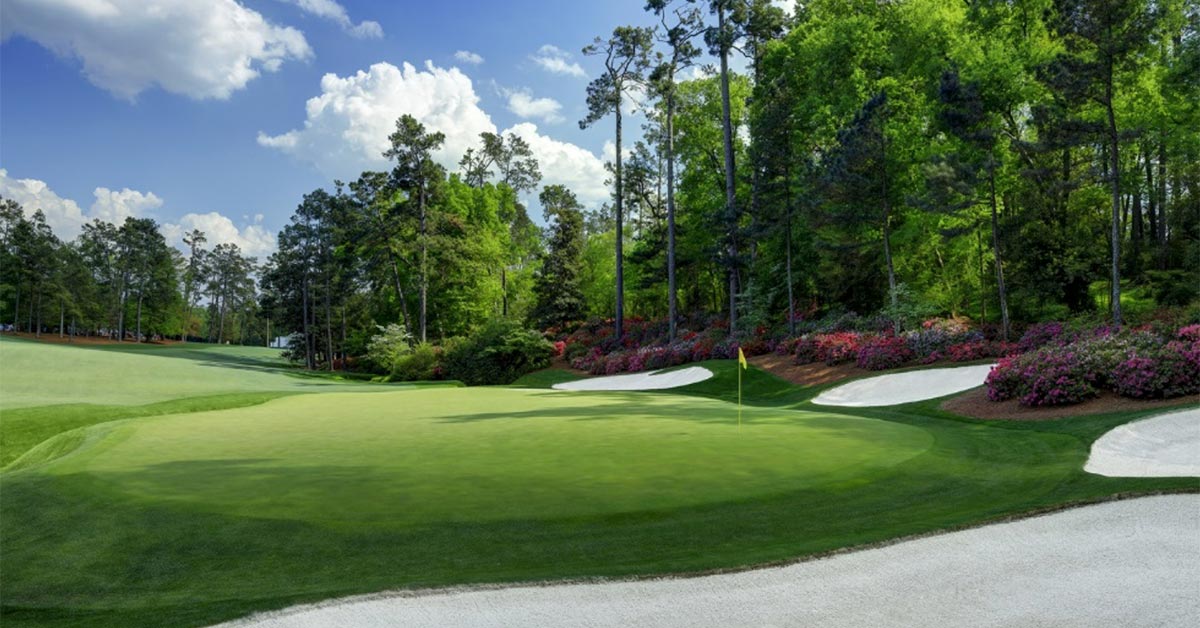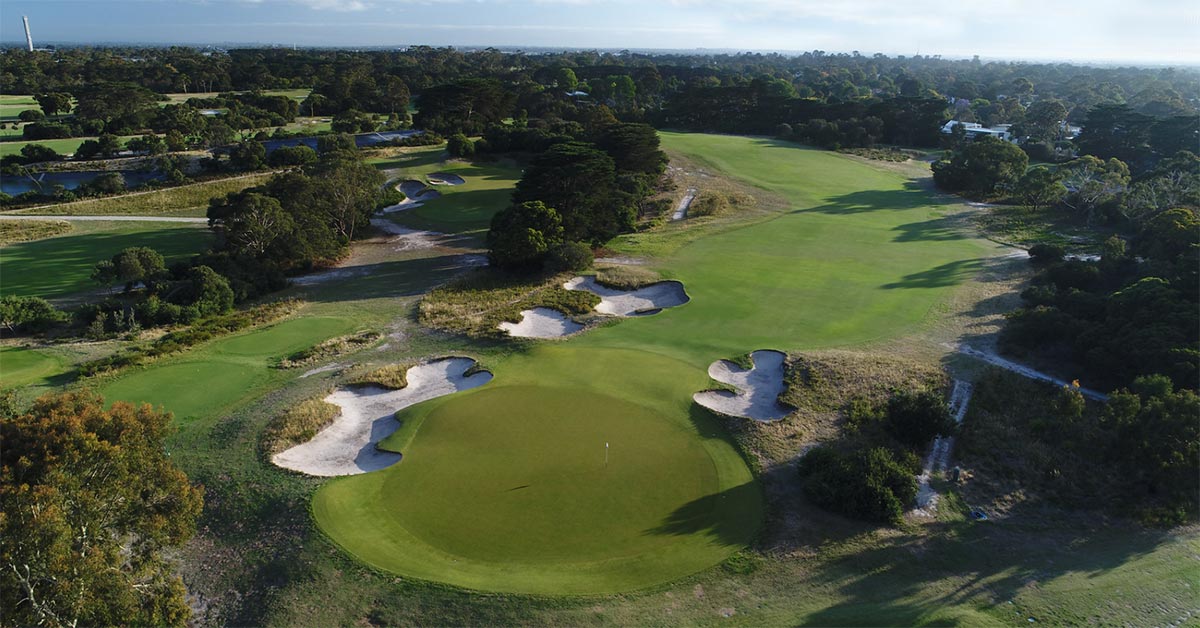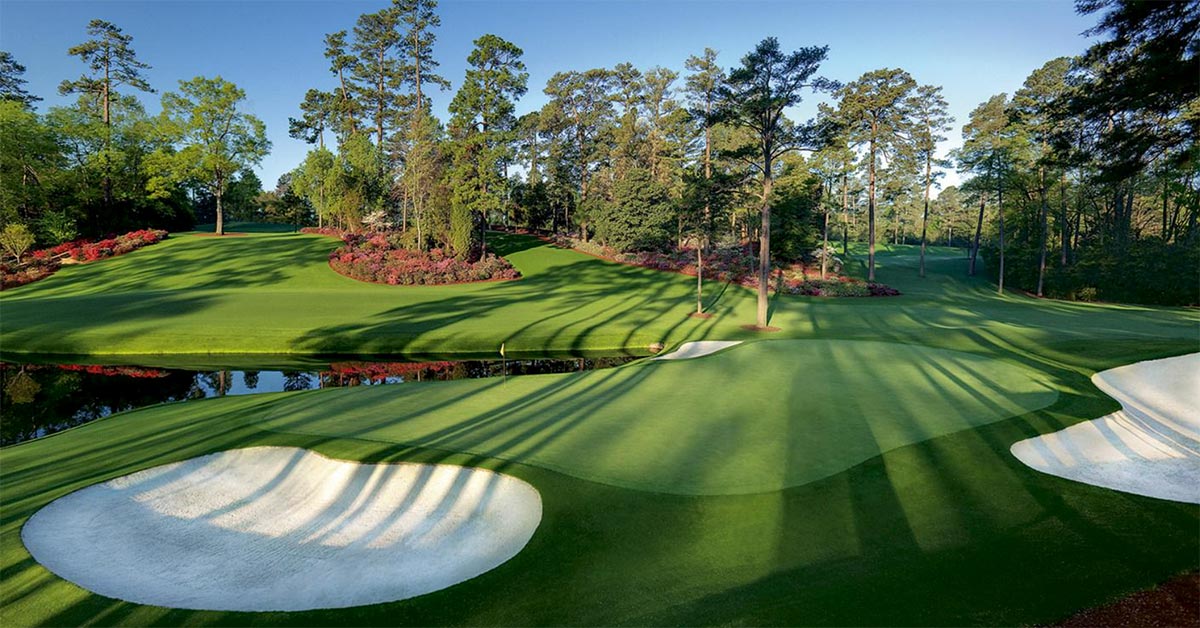Their feet were on hallowed ground, Augusta National Golf Club. But with prime vistas and sweeping views, they could easily close their eyes and be taken to Royal Melbourne on the other side of the globe.
The aura of Alister MacKenzie, even 85 years after his death, remains that strong, said two of the game’s most cerebral voices when it comes to the magnetic attraction an iconic golf course has on the soul – Ben Crenshaw and Geoff Ogilvy. They speak with passion not only about the vision MacKenzie provided, but with reverence to what we still can learn from his brilliance.
“He left a legacy in Melbourne that is still felt,” said Ogilvy, the Melburnian who won the 2006 US Open, seven other US PGA Tour events, played three times for the International team in the Presidents Cup and will serve as a captain’s assistant this year when the event returns to Royal Melbourne in December. “He changed the direction of golf in Australia.”
A genius of a golf course architect, MacKenzie left the game monuments such as Cypress Point, Pasatiempo, Crystal Downs, the Old course at Lahinch and Palmetto Golf Club, but his two most renowned courses are arguably Augusta National, annual home to the Masters Tournament, and Royal Melbourne in Australia, host to the biennial Presidents Cup this December. That made the trip to the 2019 Masters an opportune time to ask Crenshaw and Ogilvy to connect these two heralded golf courses.
Crenshaw smiled, then drifted back to 1982 when he made his debut there in the Australian PGA, shooting a sizzling second-round 65 en route to a second-place finish to Graham Marsh. “When you see Royal Melbourne for the first time, it makes a profound impact,” he said.

Equally enamoured with Augusta National from day one – which was in 1972 – Crenshaw confirms that MacKenzie’s influences are consistent. “The compartments [are very similar], the bunkering, the green sizes and green shapes. You can kind of tell they’re distant cousins, but they’re in the same family.”
As he tossed the question (“Can you compare Augusta National to Royal Melbourne?”) around in his mind, Ogilvy cast his perceptive eyes out on a vast sea of green grass. “What’s different are the environments, the whole aesthetics,” he said. “[Augusta National] is super green, southern America, tall pine trees, white sand, immaculate, almost fake-level conditioning.
“Royal Melbourne is a bit more rugged. The Sandbelt is more natural.”

As if to refuel his thoughts, Ogilvy soaked in the atmosphere of the Masters on this practice day. He paused, but there was more. Ogilvy has competed in eight Masters, so he has an affinity for Augusta National; but he is a true Aussie with deep roots to Melbourne, so his love of Royal Melbourne pours forth. Each resonates with him and he insists you cannot be misled by distinctly contrasting looks.
“The courses appear very different on the surface, but they play very similar. Big, slopey greens; big bunkers; big hazards. If you’re close to the hole on the wrong side, you’re screwed. If you’re a long way away from the hole on the correct side, you’re in a good spot.”
With a résumé that includes plenty of experience at each of these MacKenzie gems (he was top-20 four times in the Masters, where he has never missed a cut, and has played in a Presidents Cup among his many visits to Royal Melbourne), Ogilvy is an expert witness, so to speak.
“Philosophically, you have to play the same style of golf to do well. They both make you nervous when you hit into the greens, because you don’t want to be in the wrong spot. That’s how they’re similar.”
They are of the same era, too, at a time towards the end of MacKenzie’s life when he had been well established as a veritable maestro. A Scotsman who was educated in England and spent much of his later life in the United States, MacKenzie was a prodigious world traveller. His list of credits includes golf courses in New Zealand, Uruguay, Argentina, Mexico, Canada and, of course, Australia, where in the mid-1920s he made his first visit to Royal Melbourne. What Crenshaw – the two-time Masters champ who is also a heralded golf course designer – embraces about the MacKenzie legacy is that he had such vision and imagination, but also a great trust in people to carry out his work.
“He was only there a few months,” said Crenshaw. “His paperwork and skeleton are there, but the greatest stroke of luck (for him) was to meet Mick Morcom.”
A greenskeeper, Morcom is given great credit for constructing the West course at Royal Melbourne in accordance to MacKenzie’s plans, a task that was completed in 1931, right around the time the famed Scotsman was getting involved with Bobby Jones on Augusta National, which would be his last course.
Equally important to the legend of Royal Melbourne is the role of Alex Russell, a talented amateur golfer of that era who won the Australian Open at Royal Melbourne in 1924. Russell was involved in the plans at the West course, then designed Royal Melbourne’s East course.
Today, when elite competitions are held at Royal Melbourne, it is a composite of the two courses – usually 12 holes from the West, six from the East.
Well in-tune with the story of MacKenzie and Royal Melbourne, Ogilvy suggests “he was there at the right three months in Australia golf history” and that his understanding of how to make golf enjoyable is under-appreciated.

“He didn’t use rough and hazards, he used big, sloping greens to create interest,” Ogilvy says. “Normal PGA Tour courses we play use rough and hazards and length. But both Augusta National and Royal Melbourne give you difficult shots from good lies, as opposed to easy shots from bad lies.”
What Ogilvy loves about Augusta is true at Royal Melbourne, too. There are wide fairways, but whereas many modern golf courses don’t give you choices off the tee, MacKenzie provides many, depending on how you plan on entering the green.
“He lets you work out where the right spot [in the fairway] is,” he said. “It’s a more interesting way to challenge people, because sometimes you’re better to miss the green than hit the green in the wrong spot.”
Wrote Tom Doak, the acclaimed architect: “Royal Melbourne, I think, is the course Augusta wants to be – wide enough for anybody, but brilliantly routed to make use of the topography and bunkered to reward bold play and bold decisions.”
When the Australian tournaments arrived at Royal Melbourne, Crenshaw wasn’t the only American to make the long trek. So, too, did Tom Watson for the 1984 Australian Open, by which time he had piled up all eight of his Major triumphs. Still, a serious goal pulled him Down Under that northern winter.
“To win an Australian Open at Royal Melbourne would be the same as winning a British Open at St Andrews,” Watson, then 35, told reporters.
Everything about Royal Melbourne appealed to Watson, a pure ball-striker. He had won two green jackets at Augusta National and two AT&T Pebble Beach Pro-Ams at a time, 1977 and ’78, when Cypress Point was in the rota.
“He built two totally different types of courses like Augusta National and Cypress Point, from two totally different types of terrain,” Watson said. “After this week, I will have played all the great MacKenzie courses.”

After 72 holes and with a score of 281, Watson also had another win on a MacKenzie gem. To his sparkling résumé, he added the famed Stonehaven Cup, beating a field that included Greg Norman, Payne Stewart, Frank Nobilo, David Graham, Peter Senior and Wayne Grady.
Not to be denied, Norman followed with Australian Open victories at Royal Melbourne in 1985 and 1987, and Crenshaw earned his stripes at Royal Melbourne with a World Cup win alongside Mark McCumber in 1988. He cherishes that visit, but what Crenshaw said always impresses him about trips Down Under is how “Australians know how to keep golf courses; they’re brilliant landscape managers. It’s something to see.”
Fortunately, officials at Royal Melbourne have opened the doors to world-class events so this MacKenzie jewel has been seen. It has hosted 16 Australian Opens, 14 Australian PGA Championships, four World Cups, two Australian Women’s Opens, and come December it will be Presidents Cup No.3 when it’s likely that a new group of American and International players will see it for the first time. Should they derive a sense of Augusta National, that wouldn’t surprise Crenshaw or Ogilvy, for both are saturated in MacKenzie’s touches.
“I love this course,” Crenshaw said in 1982. “The bunkers are massive and so natural. That’s the essence. It’s not like a big cookie-cutter came out of the sky and put bunkers in.”
The Presidents Cup will return to Melbourne and Royal Melbourne Golf Club for the third time from December 9-15, 2019. Tickets are on sale now at www.presidentscup.com




